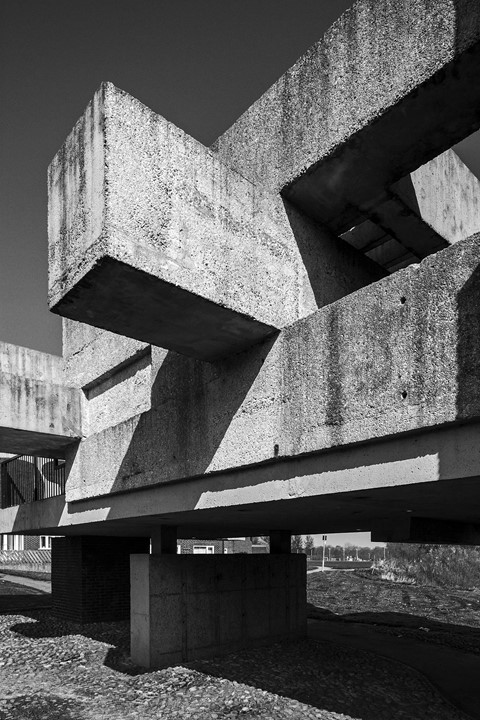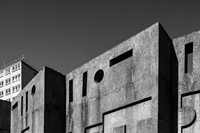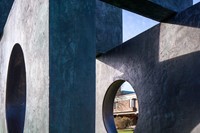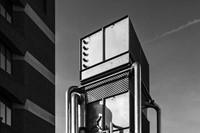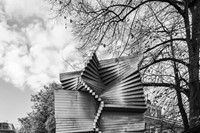Margaret Howell’s Wigmore Street store plays host to a show of photography exploring Britain’s vast breadth of publicly displayed art
British designer Margaret Howell has long championed art through her eponymous brand, often hosting exhibitions at her stores. One such show is currently being exhibited at the brand’s retail space on Wigmore Street. Comprising photography by Simon Phipps, British Post-War Public Art looks at sculpture, friezes, murals and buildings that have existed in the public sphere for decades – be that in playgrounds, housing estates, town centres or university campuses.
Phipps’ photography often takes Brutalist and Modernist architecture as its subject, shooting said structures in graphic black and white. When it came to making work for this particular exhibition, Phipps found links between the two movements. “A lot of these sculptures come from that [Brutalist and Modernist] period. They’re sort of informed by Modernist ideas and concepts,” he explains. “So they relate quite strongly to the architecture that I photograph.” Phipps was, therefore, familiar with much of the work he shot for the Margaret Howell exhibition. “There’s a lot at the University of East Anglia, which is a fantastic Denys Lasdun university campus, and there’s two – well there are a number of sculptures there – but two that are actually in the exhibition.” Work by the likes of Eduardo Paolozzi, Barbara Hepworth, Henry Moore and Lynn Chadwick all feature in British Post-War Public Art, as seen through Phipps’ lens.

The brief took Phipps up and down the country – from Edinburgh and East Kilbride to London and Milton Keynes – shooting these singular structures, some of which he was already familiar with, others being entirely new discoveries. Take the Scottish pieces, for example, by John Barclay and David ‘Dusty’ Miller in East Kilbride and Edinburgh respectively, which Phipps chanced upon while photographing architecture; “on a trip I made to Scotland to photograph some buildings up there I discovered these two sculptures, one of which no-one had ever seen anywhere”.
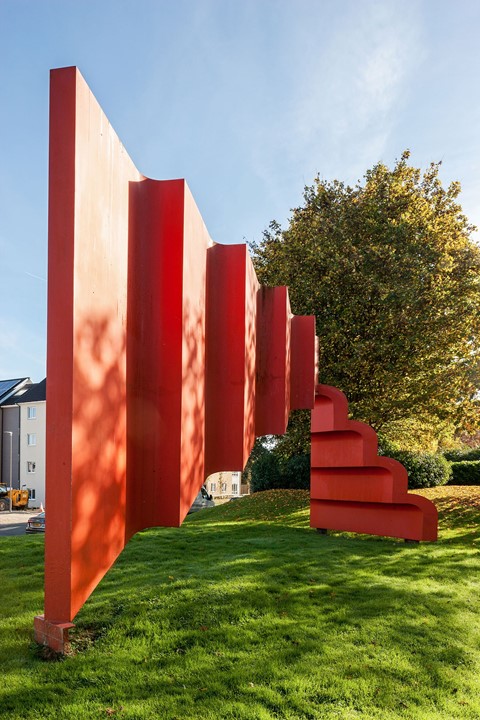
Phipps’ photography is characterised by his use of black and white, a decision made due to his interest in “the form, the sculptural quality and the materiality of these buildings” and stemming from a background in sculpture, having studied the practice at the Royal College of Art. “The decision was black and white because it really removed the distractions of colours and allows you to see the forms and the way that light and shadow played upon these structures. It made them come alive as sculptures in their own right,” he enthuses. A similar tenet, then, was applied to the sculptures Phipps encountered on this project, and the interplay between light and shadow as captured in the black and white photographs is mesmeric. Exceptions were made, however, for some of the more vivid pieces: “There’s a Bernard Schottlander sculpture in Milton Keynes which is a really bright, vivid red on this piece of really verdant green grass, so it really punches out. It felt like it had to be done in colour.” This mixture of colours serves as punctuation throughout the exhibition, Phipps notes, describing “rows of black and white suddenly interspersed with this big flash of colour”.
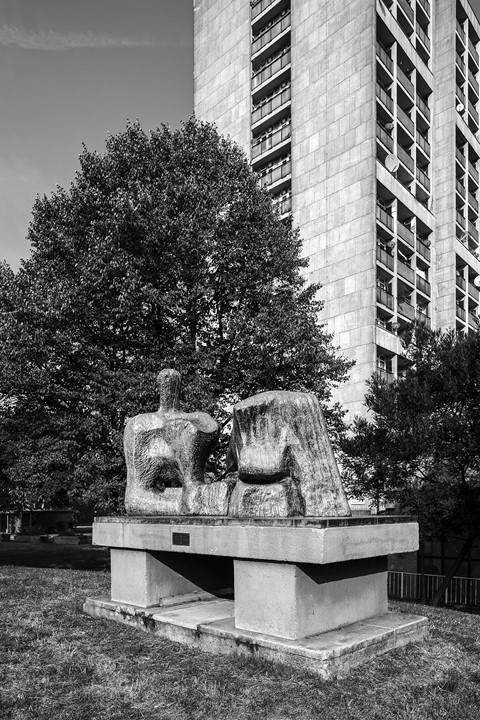


British Post-War Public Art is on show at Margaret Howell, Wigmore Street, until October 22, 2017.
